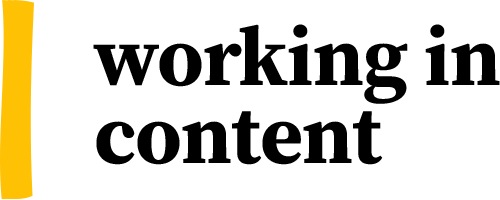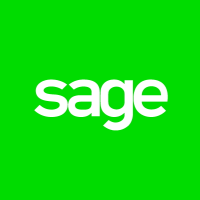On this page:
When the discipline of content design was shaped by a UK government team in around 2012, the intent was to emphasise the design aspect of the role above the editorial, writing function.
The new Government Digital Service was, from the very start, interested in sketching out factual content and basing everything on evidence. And in finding the best way to present information to users, at the right time, on the right channel, through user research and iteration.
Content designers make format recommendations
Content designers advise on how information is presented to users: the medium and shape of it, as well as the words.
Advising on medium
Based on user research, including access needs and understanding users’ time pressures, they might say,
“Hey you need a poster for that not a web page. Our customer has attention spare for innovative cheese graters while waiting for a train or bus, but they are not going to proactively visit our website, or notice an online ad. This needs to literally be in front of them.”
Or,
“Bin the Stranded at Sea app, we need a phone line. This is for people who are in an emergency situation, are panicking, so their cognitive capacity is reduced, and they need to be calmly talked through the next steps.”
Advising on shape
I chose the word ‘shape’ to avoid using ‘look’, as this is about more than how content looks: it’s about how it functions, and how users interact with it.
A content designer might review the user needs and data-based evidence, and decide that a captioned video or image with alt text is the best way to convey information. For example, instructions on washing hands during the pandemic needed to be clear and stand out.
These are some non-verbal ‘shapes’ a content designer might advise to be used for content presentation:
- video with captions (example from Kew Gardens YouTube)


-
“hide and reveal” details toggle (example from GDS Design system)
![hide and reveal details toggle from GDS Design System]()
![hide and reveal details toggle from GDS Design System]()
-
anchor links (example from Content Design London Readability Guidelines)

- pull quotes (example from Medium, 8 steps to content-first design by Sarah Johnson)

-
case study
-
form (example from GOV.UK, recommended for form design best practice on the Effortmark website)

-
content merge with existing content
-
step by step on-page list and step by step information architecture (example from GOV.UK)

- chaptered guide (example from GovIntranet demo site)

- image reinforcing online message (example from British Red Cross)

- offline poster, letter, leaflet or ad (example from NHS)

From captioned video to step-by-step to posters, information is like fluid content designers pour into different containers. They design those containers, as well as clarifying the messaging verbally.
Advising on page structure
When long-form text is the best information delivery format choice, content designers structure the copy with subheadings, based on user needs, language research and analytics trends.
As with a news article, the most frequently needed information, which answers the majority of user needs for the content, is put at the top.
Content Design overlaps with other design roles
By helping steer the mode of communication (poster, letter), content design overlaps with service design.
Content designers will often also be the designers on a product team who sketch out the wireframe flow for an interaction and carry out user research on the prototype (if there is no dedicated user research function on the team).
This overlaps with UX design. And, in fact, you might find a content designer performing any or all of the following UX design duties or a regular basis:
-
user research
-
journey mapping
-
product or service analysis
-
design sketching
-
wire-framing in Miro or Figma
-
prototype building in Axure, Marvel – or GitHub
-
card sorting with TreeJack, for naming and labelling
-
usability testing
-
design iteration
-
raising Jira tickets
-
user interface design
-
pair working with developers
Additionally, not strictly design, but content designers frequently operate as the content strategy function too, where there is none at the organisation. This means making calls on content governance and publishing workflow, as well as future planning and maintenance, among other things.
Crossover with UX Writing
Content designers do also write words on occasion! On many occasions. And they work closely with user-centred design teams to increase usability for users, looking at the research and probing the evidence, asking questions, steering the overall design and 360º product experience from a content point perspective, as UX writers do. Both roles write interactive microcopy, form labels, error messages, 404 copy, standard emails, texts, notifications copy and everything else that contributes to the all round user experience through verbal communication.
I’d like to quote Carrie Hane, a user-centred content specialist in the US, at this point, as I think she encapsulates it well.

What’s in a name?
If everything that content design covers is also performed by UX writers, there is even more overlap than I realised.
Or even more of a problem, I should say. It helps no one to have multiple roles doing the same thing and titled differently or vice versa. It’s confusing for the employer or client as well as for the employee or contractor.
Classification systems rose in popularity in the Victorian era, and the intent was to describe different entities uniquely. If there is little consistency between a role from one place to another, it really does raise the question: what's in a name?
Broadly speaking, we have two options for resolving this, either to revert to calling everyone a designer (with the proviso of ‘specialising in…’) which some organisations are opting for, or to agree on a set of role descriptors. Certainly a tricky challenge.
Actions not titles
For me the bigger concern, however, is not the interchangeability of UX design, UX writing, service design, interaction design and content design roles, if all of them are carrying out or consulting user research and evidence-based data, and iterating the design following usability testing.
The really troublesome issue is the adoption by organisations of, for example, content designer as a trendy role title, while only paying lip service to user-centred design (or ‘theatre' as it has been called, the earliest reference to UX theatre made in 2010).
But there is a big benefit in using the term content designer, if you are simultaneously calling out all the user-centred design techniques a content designer should be doing, also including subject matter expert pair writing, stakeholder show and tells, usability analysis, retros and content crits (peer reviews). It keeps in mind that we are designing with usability always front and centre.
Introducing ‘writer’, even alongside ‘UX’, can minimise that and put the focus back on the written word. It seems from there an easy step back to ‘calling in the word person’ at the last minute to replace the lorem ipsum copy. Which is not user-centred design. If a predetermined, unchangeable character limit has been put on a form field and that’s too short to explain clearly what the user needs to do, having a skilled UX writer on it will not save the usability.
In conclusion: a takeaway and a new suggestion
We should perhaps focus on what we do, where we overlap, where we can learn from each other, and how we can advocate for the user and user-centred design techniques in our organisations, rather than on what we are called.
But that said, personally, I’d like to hear more mention of information designer as a catch-all term. It:
-
focuses on what both the content designer and UX writer roles are doing, conveying information in an optimal way for users – and yes, this includes choosing the right tone of voice for the content element and keeping brand consistency for a seamless experience
-
has gravitas: sad to say it, especially as an English Literature and Language graduate, but this more technical descriptor may encourage more respect and consideration than either ‘content’ or ‘writer’, based on my and multiple others’ experiences
-
was an original computer-era term for the design of information
It is also used in the graphic design discipline to distinguish ‘useful’ graphics from purely aesthetic graphics. Graphic design is an integral part of online information too, especially for technical communications, and a holistic term that helps us all recognise each other as parts of that whole, rather than disparate, opposed fractions, is surely a good idea.
Of course, there’s sure to be the suggestion of Information experience designer straight away!
Did you find this thought provoking? Add your reflections on our tweet thread.












